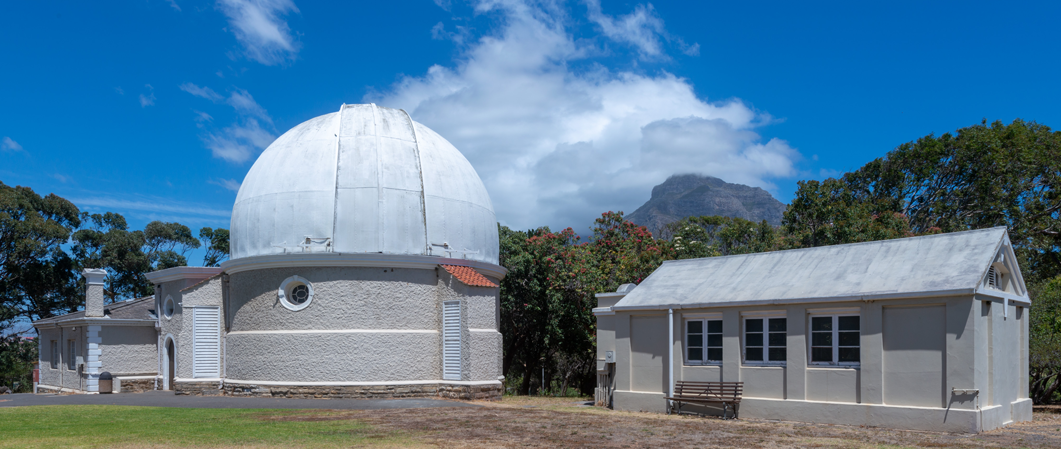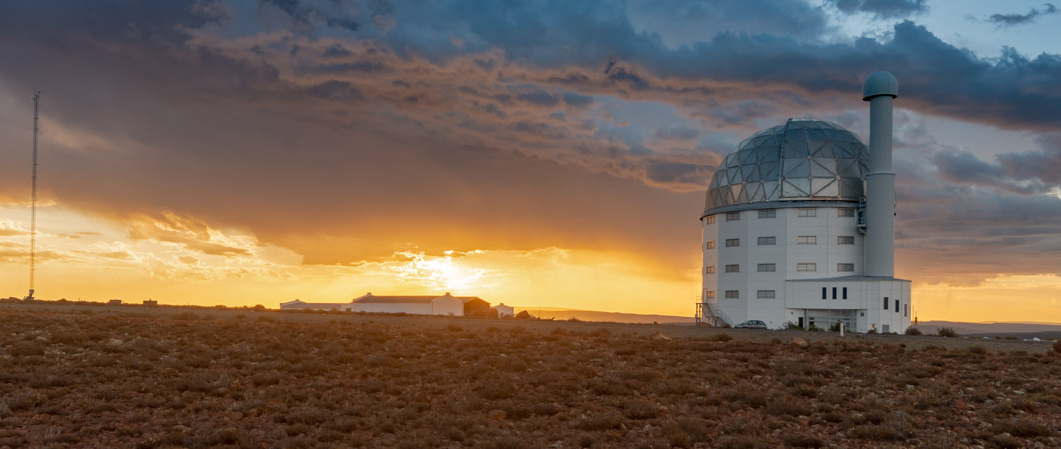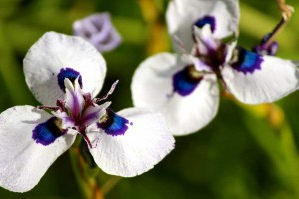Welcome to the South African Astronomical Observatory (SAAO), South Africa’s leading astronomy research institute and home to the Southern African Large Telescope, the largest optical telescope in the southern hemisphere.
Founded in 1820, the SAAO is the national centre for optical and infrared astronomy in South Africa. Its primary role is to conduct fundamental research in astronomy and astrophysics by providing a world-class facility to scientists. The SAAO also promotes astronomy and astrophysics in southern Africa, by sharing research findings and discoveries, and participating in outreach activities to enthuse citizens about physics and astronomy.

The SAAO is a facility of the National Research Foundation, which operates under the South African Department of Science and Innovation. The SAAO is comprised of headquarters in the eponymous suburb of Observatory in Cape Town, and a dedicated research and observation station with several working telescopes (including SALT) outside the Karoo town of Sutherland in the Northern Cape.
In order to achieve the best possible observing conditions, all of the current astronomy operations occur in Sutherland. Historical telescopes in Cape Town are still regularly used for outreach and public events.
History of the SAAO
On the 20th of October 1820, the British King George IV authorised the British Admiralty to establish a Royal Observatory at the Cape of Good Hope in order to provide accurate star positions to assist ships navigating the treacherous waters of the Cape. It was from this observatory that the current SAAO formed, and the suburb of Observatory, Cape Town, took its name.
The SAAO has roots in other parts of the country as well. The present South African Astronomical Observatory was formed in 1972 by combining the Royal Observatory at the Cape with the Republic Observatory in Johannesburg. The three most modern telescopes from the two observatories found a new home on a small plateau outside Sutherland with dark skies and perfect weather for astronomical observations. The SAAO also procured the Radcliffe Observatory telescope in Pretoria (the largest in the southern hemisphere at the time) which was installed in Sutherland in 1974.
Today’s SAAO
Since 1972, SAAO astronomers have benefited from the dark, unpolluted skies of the Karoo, with little to no heavy cloud cover to negatively affect observing. Research has ranged from planetary studies to the nature and life-cycle of stars and galaxies both near and far.

Work on stars whose size and light vary resulted in the International Astronomical Union (IAU) sponsoring a conference on these variable stars in Cape Town in 1995 – the first IAU conference ever to meet in Africa. SAAO researchers have also helped us to understand the centre of our own galaxy, using infrared cameras and detectors to pierce the thick dust clouds that hide the centre from view. The SAAO’s contributions to the study of nearby galaxies made it logical that the first IAU Symposium in Africa, on galaxies in the Local Group, should also meet in Cape Town in 1998.
Ecology & Environment
The SAAO headquarters in Cape Town is situated on a 9ha property on a small hill, within the Two Rivers Urban Park (TRUP) in Observatory. The park is located where the Black and Liesbeek Rivers meet and was originally chosen to be within view of Table Bay, to allow visual time signalling to visiting ships.
The property is one of the last remaining locations close to the city centre where the original ecology of the area is preserved. The property is central to the Two Rivers Urban Park, a conservation area established by the City of Cape Town. It is bordered to the east and north by wetlands, and the low-lying areas are prone to flooding in winter.

SAAO Executive Team
Mr Iriwaan Simon
Manager: Information & Technology
Mr Kevindran Govender
Director: IAU OAD
Mr Eugene Lakey
Manager: Finance and Operations
Mr Sivuyile Manxoyi
Manager: SALT Collateral Benefits Programme
Dr Stephen Potter
Head: Astronomy
Dr Encarni Romero Colmenero
Head: SALT Astronomy Operations
Dr Ramotholo Sefako
Head of Telescope Operations
Mr Hitesh Gajjar
Head: Instrumentation
Mrs Linda Tobin
Manager: Human Resources
Prof. Petri Väisänen
Director: SAAO
Values & Code of Conduct
People form the most important asset within an organisation and their behaviour and attitudes shape the workplace culture. We want the SAAO to be a workplace in which all employees feel they belong, are appreciated and valued, and are empowered to contribute positively towards the SAAO’s success in science, training, development and innovation, and outreach.
We want an organisational culture free of discrimination, harassment and bias of any kind. We want a relaxed, friendly culture where one can express their views and does not need to unnecessarily tip-toe, and simultaneously one which is safe for everyone regardless of their background. We recognise this is only possible in a place where people are willing to learn from others and adjust their behaviour when required. Earn people’s trust and then trust each other, only then can we speak openly and honestly, sharing feedback and opinions without fear of retaliation or rejection, among peers or along reporting lines.
South Africa’s history has left us with a legacy of inequality and exclusion; a legacy that we are committed to eradicating at the SAAO. We want to create a workplace in which employees work towards addressing the injustices of the past. We can only achieve real change in our organisation if colleagues work toward a common goal. This cohesive and unified effort from all employees is necessary to realise progress as both an organisation and as a society.
With this in mind, we have created this policy to inform and guide the actions and interaction you take and have at the SAAO. The behavioural guidelines apply to the professional conduct of all staff, students, interns, associate staff, and visitors. The summary presented below is based on the NRF ethics rules and policies to which we have all already agreed to abide by as employees of the NRF. This is a living document and can be updated at any time. Feedback regarding it is encouraged.
If you feel you are the victim of harassment, discrimination or behaviour that is contrary to the values and ideals expressed in this document and the NRF code of ethics, please approach your line manager and/or the head of HR and/or assigned individuals trained to address these concerns. There are formal mechanisms available in the NRF HR Policy to address and resolve contraventions to our code of conduct.
